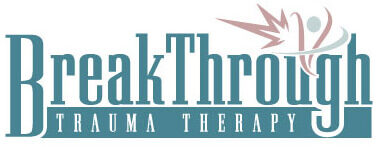Have you experienced a traumatic event? Are you suffering from lingering fear and anxiety? Do you feel like you no longer have any control over how you think, feel, and behave?
 Posttraumatic stress disorder – also known as PTSD – is a mental health challenge that may occ
Posttraumatic stress disorder – also known as PTSD – is a mental health challenge that may occ
ur in individuals who have experienced or witnessed a traumatic event, such as a natural disaster,
a terrorist act, an act of war, a serious accident, rape, or any other violent personal assault.
It is believed that PTSD affects nearly four percent of the U.S. adult population. While it is usually linked with
veterans who’ve experienced combat, PTSD occurs in all people regardless of age, race, nationality or culture. In fact, women are twice as likely to experience PTSD than men.
What are the Symptoms of PTSD?
People with PTSD often experience intense thoughts and feelings related to their traumatic experiences. These can last for a long time after the initial event. Many people with PTSD also relive the event through flashbacks and nightmares.
People with PTSD often feel intense emotions such as fear, anger, sadness, and detachment from friends, family, and community members. They often avoid people and situations that remind them of the traumatic event. Ordinary sounds or incidents, such as a door banging or accidental touch in a crowd may cause a strong and uncontrollable reaction.
Diagnostic Criteria for PTSD.
What follows is a summary of diagnostic criteria A through H for PTSD in adults, adolescents, and children older than 6 years old. All criteria are required for a diagnosis of PTSD to be made:
Criterion A: Exposure to death, threatened death, serious injury, or sexual violence in one (or more) of the following way(s):
- Direct experience of the trauma
- Witnessing firsthand the trauma
- Learning a relative or close friend was exposed to a trauma
- Repeated or extreme exposure to aversive details of the trauma, typically experienced by first responders, medics, police officers, etc.
Criterion B: Presence of one (or more) intrusive symptoms associated with the traumatic event(s) after the event(s) occurred:
- Recurrent distressing memories
- Recurring nightmares
- Flashbacks, or disassociative reactions in which the person feels the trauma repeating
- Intense or prolonged psychological distress in the face of reminders
- Physical reactions in the face of reminders
Criterion C: Avoidance of stimuli associated with the trauma, as evidenced by one or more of the following:
- Avoidance of distressing memories and thoughts about the trauma
- Avoidance of distressing external reminders of the trauma, like people, places, conversations, and activities
Criterion D: Negative alterations to mood and cognition, as evidenced by two (or more) of the following:
- Inability to remember important aspects of the trauma
- Exaggerated negative thoughts about oneself, others, or the world
- Blaming oneself or others for the trauma
- Persistence negative emotional states, like fear, horror, anger, guilt, or shame
- Diminished interest in activities
- Feelings of detachment or estrangement from others
- Inability to experience positive emotions
Criterion E: Alterations in arousal and reactivity, as evidenced by two or more of the following:

- Irritability and angry outbursts with little or no provocation
- Reckless and self-destructive behavior
- Hypervigilance
- Exaggerated startle response
- Problems with concentration
- Difficulty sleeping
Criterion F: Duration of the disturbance is more than 1 month.
Criterion G: The disturbance causes significant distress or impairment in social, occupational, and other important areas of functioning.
Criterion H: Symptoms are not due to medication, substance use, or another medical condition.
Two specifications are part of this diagnostic criteria, too, and are summarized as follows:
- Dissociative Specification: In addition to meeting the criteria for PTSD, the person experiences high levels of either of the following in reaction to trauma-related stimuli:
- Depersonalization. Experience of being detached from one’s self or body, as if one were in a dream.
- Derealization. Experiences of unreality, like the world, was unreal, dreamlike, distant, or distorted.
- Delayed Specification. Full diagnostic criteria are not met until at least six months after the traumatic event(s), although the onset of symptoms may be immediate.
The Neurochemistry of PTSD
PTSD occurs when there is a disconnect between the amygdala, hippocampus, and prefrontal
cortex. All these are brain parts responsible for how you sense, recall, react, think, and feel
about a traumatic event.
The amygdala is the stress response center. It picks sensations from your internal and external
environment and processes and interprets them. If it detects a threat or distress, it transmits this
message to the hippocampus. The hippocampus mediates memory formation and fear-related
behavior.
The hippocampus creates a memory for the event, enabling your body to respond faster to
similar events in the future. It also stimulates and sustains cortisol release and activity. Cortisol
increases your alertness and vigilance, a crucial response when you are in real danger.
Cortisol also activates the hypothalamus, which, in turn, spurs the adrenal glands to release
another stress hormone called adrenaline. The two hormones work together to maintain the
stress response, also known as anxiety or the fight or flight response. The amygdala also sends
signals to the prefrontal cortex, which processes fear.
In PTSD, a glitch occurs between the amygdala and the hippocampus. The amygdala fails to
record the traumatic event with the associated sensations correctly. The hippocampus stores
the faulty file.
Recollection about the event from sights, sounds, touch, sounds, or visions causes the
amygdala to launch the stress response as though the incident was occurring at that moment.
The prefrontal cortex increases your apprehension and motivates adaptive behaviors in
response to the resulting ordeal. Each traumatic episode rewires your brain to accept the faulty
glitch as real, leading you into a vicious cycle of severe anxiety and paralyzing fear.
How Can Treatment Help?
There are a variety of treatments that can be used to treat PTSD. However, there are three specific techniques that are consistently gaining research-based evidence of their effectiveness in successfully treating PTSD.

- Cognitive Processing Therapy – This modality focuses on how a person perceives a traumatic event and processes it. A therapist can help their client work through stuck points, which are certain thoughts related to the trauma that prevents the person from recovering.
EMDR – EMDR stands for eye movement desensitization and reprocessing. This technique uses bilateral sensory input such as side-to-side eye movements to stimulate the brain to process difficult thoughts, memories, and emotions. - Cognitive Behavioral Therapy – CBT is a form of talk therapy that focuses on how thoughts, feelings and behaviors are related to one another. The goal of a CBT therapist is to help a client with PTSD return to a place of hope with a greater sense of being in control of their thoughts and behaviors.
If you or a loved one suffer from PTSD and would like to explore treatment options, please reach out to us. We have personally seen amazing transformation through therapy and want to offer the help you need to enjoy life again.
Click here for more on Trauma Therapy.

